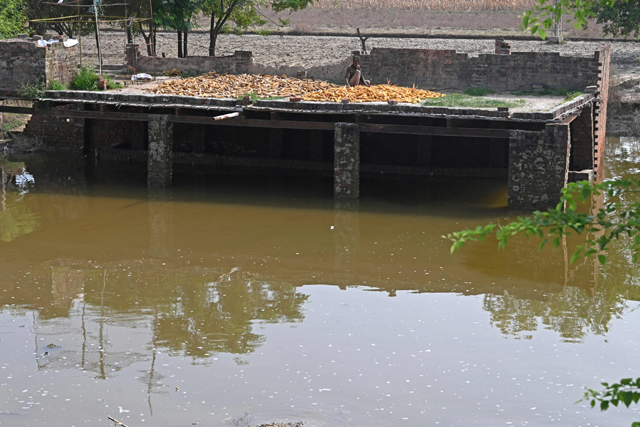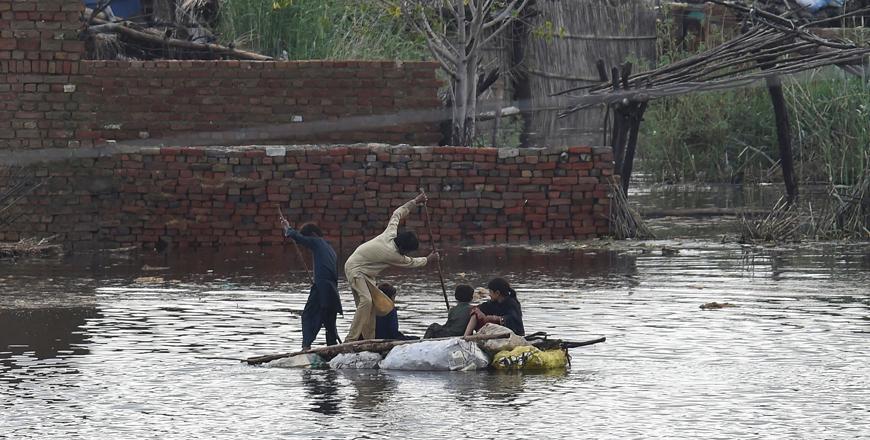You are here
10 times normal rainfall drove vast Pakistan flooding — ESA
By AFP - Sep 01,2022 - Last updated at Sep 01,2022

This handout satellite image taken on Tuesday and released by the European Space Agency on Thursday, shows the extend of flooding in Pakistan with a wide view of the affected area (left) and a zoom into the area between Dera Murad Jamali and Larkana, the blue to black colours showing where the land is submerged (AFP photo)
PARIS — Rainfall 10 times heavier than usual caused Pakistan's devastating floods, the European Space Agency (ESA) said Thursday, as it released satellite images of a vast lake created by the overflowing Indus river.
Rains, described by UN chief Antonio Guterres as a "monsoon on steroids" have claimed hundreds of lives since June, unleashing powerful floods that have washed away swathes of vital crops and damaged or destroyed more than a million homes.
Data from the EU's Copernicus satellite has been used to map the scale of the deluge from space to help the rescue efforts, the ESA said in a statement.
"Heavy monsoon rainfall, ten times heavier than usual, since mid-June have led to more than a third of the country now being underwater," it said.
The agency released images from the satellite showing an area where the Indus River has overflowed "effectively creating a long lake, tens of kilometres wide", between the cities of Dera Murad Jamali and Larkana.
Officials say more than 33 million people are affected, one in every seven Pakistanis, and reconstruction work will cost more than $10 billion.
Guterres has called the floods a "climate catastrophe" and launched an appeal for $160 million in emergency funding.
While it is too early to quantify the contribution of global warming in the floods, scientists say the rains are broadly consistent with expectations that climate change will make the Indian monsoon wetter.
A recent study, based on climate models, predicted that exceptionally wet monsoons in the Indian subcontinent would become six times more likely during the 21st century, even if humanity rachets down carbon emissions.
Related Articles
LAHORE — More than 14,000 people and their cattle were evacuated from villages in eastern Pakistan, authorities said Tuesday, following the
MINGORA, Pakistan — Thousands of people living near flood-swollen rivers in Pakistan's north were ordered to evacuate Saturday as the death
DHAKA — The death toll from heavy monsoon rains across South Asia has climbed to nearly 200, officials said on Sunday, as Bangladesh and Nep

















